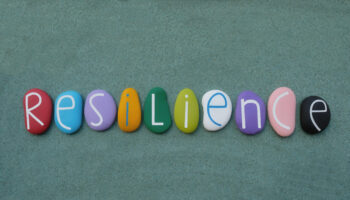Michelle Mallonee Long
First things first, relinquish control. Stop trying to control everything in the environment, the learning, the movements of the children. Open up your heart and mind to allow room for creativity. For many teachers, this is easier said than done. The fear of chaos as a result prevents them from loosening up the reins and allowing room for freedom. You will still need to have some clear expectations of the children’s behaviors, but keep them simple, 3-4 classroom rules are sufficient, and remember, “Don’t say don’t, say Do.” Phrase those rules as the expectation of the positive behavior you are encouraging.
“There is a significant difference between being irresponsible and letting go of the need to be in control.” – Elizabeth Jones
Before you automatically say “No” to a child, ask yourself:
- What or who is going to get hurt?
- What can be gained by this experience?
- Why am I saying no?
- Am I offering the children a chance to lead?
As you allow children the opportunity for free play and exploration keep in mind that by:
Providing choices – you are offering the children to select materials that meets their individual interests and needs.
“Learners learn best when they make choices” – Elizabeth Jones
Trial and Error – is okay, one cannot learn to walk without falling down, a block tower will continually fall without a sturdy foundation.
Natural Consequences – happen as a result of children’s behavior choice. A child who refuses to eat will eventually become hungry. A child who refuses to wear mittens will experience the sensation of hands becoming cold. Sometimes children need to have the experience to understand better than any words we use to try to describe a situation or consequence.
“Students are more likely to do well if I believe they can” – Elizabeth Jones
Exploration and Discovery – What do you do when you get curious about something? Feel it, smell it, taste it? None of these can be done with flash cards.
As you look for ways to inspire your own techniques of teaching creatively nudge yourself:
What else? – this triggers the response of more and offers the opportunity to expand your horizons.
What if? – this will trigger your imagination and spark new ideas.
“Imagination is more important than knowledge.” – Albert Einstein
Show it – show the same concept or idea in many ways by trying to capture different learning modalities (demonstrate, pictures, music, dance, sculpture, graphs, reports, puppets, bulletin boards, etc.)
Fake it – try something even if you think you can’t do it. It is okay not to be perfect. Invite participation, encourage involvement, mistakes often lead to a new idea you did not think about in advance.
“Unless we try, we don’t know what we can’t do.” – Unknown
For additional information on this topic check out:
Fostering Creativity: The Preschool Teacher
Resources for Creative Teaching in Early Childhood Education
What Makes a Great Preschool Teacher?




